Days Before Convention, He Wants ‘a Break’
Homepage photo: InterContinental Hotel, Miami, site of the upcoming NAHJ convention
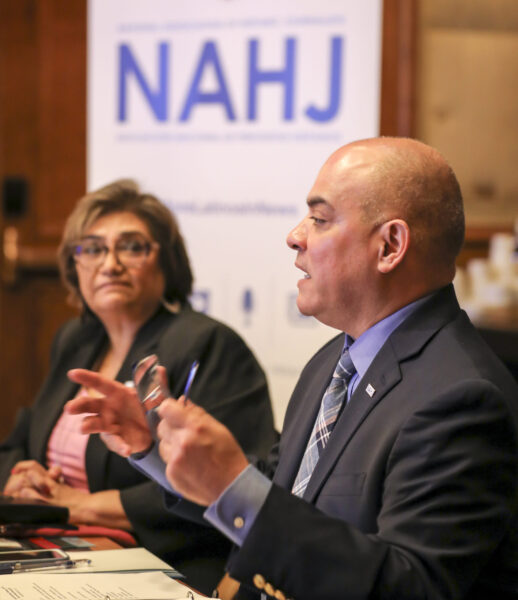
Days Before Convention, He Wants ‘a Break’
The executive director of the National Association of Hispanic Journalists resigned Friday, after a year and a half on the job and 12 days before the organization’s signature event, its annual convention.
David Peña Jr. messaged Journal-isms Monday, “After a year and a half I felt it was time to take a break and look for other opportunities. I am proud of the work achieved to solidify the internal foundation of NAHJ, expand its presence into Mexico, Dominican Republic, Puerto Rico and diversify its funding sources as it enters its 40th year.”
Peña told the board last month that the convention was sold out and the organization was seeking to find a way to accommodate 1,600 people at a hotel that had a capacity of only 1,300. The group had a waiting list. Registration closed two days early. Peña also said NAHJ has hired additional security at the hotel.
 Peña told Journal-isms he would not be at the convention, which takes place July 12-15 in Miami, though he will remain with the organization through July 28.
Peña told Journal-isms he would not be at the convention, which takes place July 12-15 in Miami, though he will remain with the organization through July 28.
“I have assembled a very capable and solid team who will execute an amazing convention while working hard to meet the expectations of the 1500+ attendees, and our 80 committed funders and supporters,” he said. “I wish the NAHJ members all the best as [they] continue to fight for visibility and a seat at a decision making table.”
The NAHJ board, when it hired Peña in February 2022, said Peña had been “executive director for the National Hispanic Business Association, the Hispanic Dental Association, President for College & Universities at ALPFA [Association of Latino Professionals For America] National, and President of The Greater Austin Asian Chamber of Commerce. Peña’s civic involvement is as diverse as his work history. He has served on multiple boards at the local, regional and national levels for numerous cultural, business, service and health organizations which serve the general public, Asian, Hispanic and LGBTQ+ communities.
“The impact of his 20+ years creating programs, scholarships, mentorships and connections is well known, having helped launch the careers of thousands of emerging Latino leaders in business, finance, accounting, dentistry, entrepreneurship and other diverse industries. . . .”
Nayeli Jaramillo-Plata wrote in August for the convention newspaper, the Latino Reporter, “He stepped into the role at a time of upheaval — the organization was furnishing a strategic plan to guide them into the future as the journalism industry continues to morph. The previous executive director stepped down abruptly and, according to board members, left the organization in disarray.
“Peña, 53, has committed to steering the nonprofit in a new direction and restoring members’ faith after years of controversies, including a nearly-cancelled election, a sexual misconduct investigation and accusations from members that NAHJ was not transparent enough about its dealings or finances. . . .”
Last summer’s joint convention of the National Association of Black Journalists and NAHJ drew 4,750 registrants, NABJ Executive Director Drew Berry told the NABJ board in October. NABJ drew 3,417 and NAHJ 1,333 to Las Vegas for the Aug. 3-7 event.
NAHJ’s communications director, Iván Leonel Briones, could not be reached and NAHJ President Yvette Cabrera did not respond to a request for comment.
J-Schools: We’re Still Down With Diversity
June 29, 2023
SCOTUS Ruling May Require Walking Tightrope
‘Affirmative Action’ or ‘Preferences’?
Jason Murray Named Washington Post Sports Editor
Rivera Quits Fox after ‘Firing’ From ‘The Five’
Wesley Lowery Joins American U. Faculty
Donations are tax-deductible.
- New! Facebook fundraiser
A CNBC story last year said, “By many standards, Michael Wang, 25, was the perfect student in high school. Wang graduated in the top 0.5 percent of his class with a 4.67 weighted GPA, near-perfect test scores and countless extracurriculars. When all of this resulted in rejections from his first choice-schools, he wondered what more he could’ve done, and then another thought crossed his mind — had he been rejected because he was Asian American?” (Credit: YouTube)
SCOTUS Ruling May Require Walking Tightrope
The Radio Television Digital News Association and major universities with journalism programs vowed to continue to seek diversity Thursday in the wake of a U.S. Supreme Court decision striking down affirmative action in college admissions.
However, two major journalism groups — the News Leaders Association, representing editors, and the Association for Education in Journalism and Mass Communication, representing journalism educators — did not weigh in.
The News Leaders Association did not respond to an inquiry, and AEJMC President Deb Aikat messaged, “We do not have an official reaction we can share with you.
“Our AEJMC leadership will need time to thoroughly review the details of the U.S. Supreme Court ruling in Students for Fair Admissions Inc. v. University of North Carolina, et. al., and its potential impact before determining specifically how journalism educators will comply with this decision. In the coming weeks, we will communicate our plans with our AEJMC membership.”
The national journalist-of-color organizations were similarly silent.
However, Dan Shelley, CEO and chairman of RTDNA, messaged, “RTDNA is deeply concerned that the Supreme Court ruling could make it more difficult for newsrooms across the country to employ journalists of color who’ve been educated in the nation’s top journalism programs. Broadcast and digital news outlets remain committed to staffing their local markets with journalists who truly reflect the communities they serve. The ruling could make that more challenging but will not dissuade the industry from doing everything it can to fulfill its duty.”
Institutions such as the University of California at Berkeley, which has a major journalism school, reacted quickly. In short order, Berkeley staff members posted reactions from seven faculty and administrators on its website.
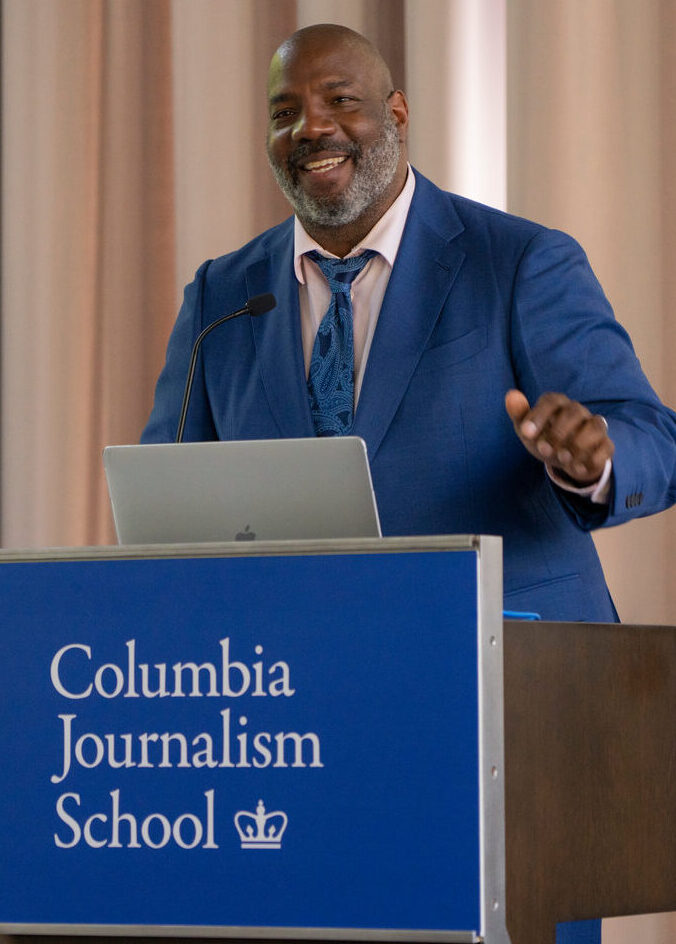 At Columbia Journalism School, Dean Jelani Cobb (pictured) issued a brief statement — “We remain committed to this pursuit in every way legally possible” — that followed an official one from the university expressing determination: “Diversity is a positive force across every dimension of Columbia, and we can and must find a durable and meaningful path to preserve it.”
At Columbia Journalism School, Dean Jelani Cobb (pictured) issued a brief statement — “We remain committed to this pursuit in every way legally possible” — that followed an official one from the university expressing determination: “Diversity is a positive force across every dimension of Columbia, and we can and must find a durable and meaningful path to preserve it.”
Cobb wrote a longer piece for the New Yorker in his role as a staff writer there. ” ‘How long?’ was always the wrong question,” Cobb said, addressing impatient critics. “It presupposed that there was a standard speed at which groups whose disadvantages were the product of centuries of social engineering were meant to recover and achieve. The salient metric was progress, not time.”
As Adam Liptak reported for The New York Times, “Race-conscious admissions programs at Harvard and the University of North Carolina are unconstitutional, the Supreme Court ruled on Thursday, the latest decision by its conservative supermajority upending decades of jurisprudence on a contentious issue of American life.
“Chief Justice John G. Roberts Jr., writing for the 6-3 majority, said the two programs ‘unavoidably employ race in a negative manner’ and ‘involve racial stereotyping,’ in violation of the Constitution,” namely, a 14th Amendment that, Justice Ketanji Brown Jackson had reminded her colleagues, was designed to aid newly freed Black people.
“Universities can consider how race has affected a student’s life — a topic they may write about in an application essay, for example — but he warned schools not to use such considerations as a surreptitious means of racial selection. ‘Universities may not simply establish through the application essays or other means the regime we hold unlawful today,’ he wrote. . . .”
Specifically at issue, as Michelle N. Amponsah and Emma H. Haidar wrote for the Harvard Crimson, were cases from Harvard University and the University of North Carolina. The conservative court declared Harvard’s race-conscious admissions policy unconstitutional.
“The 6-2 decision — widely expected by legal scholars due to the Court’s strong conservative majority — marks a major setback for Harvard, which has faced scrutiny for its admissions practices since anti-affirmative action group Students for Fair Admissions first filed suit in 2014.
“The suit alleged the College’s admissions processes discriminate against Asian Americans in violation of the Civil Rights Act of 1964, which bans institutions that receive federal funds from discriminating ‘on the grounds of race, color, or national origin.’
“The Supreme Court also ruled against the University of North Carolina and its admissions policies in a 6-3 decision. Justices heard the suits, both brought by Students for Fair Admissions, on the same day last October.”
The Crimson promised it “will break down what this ruling means for the admissions process, undergraduates, and higher education in a special print edition Friday, which will also be published online.”
 The University of Maryland administration was one of the first to react to the ruling, as was its outgoing journalism school dean, Lucy Dalglish (pictured).
The University of Maryland administration was one of the first to react to the ruling, as was its outgoing journalism school dean, Lucy Dalglish (pictured).
“We will comply with the law, while recognizing that the future of democracy depends on people from diverse communities having access to information,” Dalglish said. “Citizens need to make informed decisions about every issue in American society, and the best way to ensure they receive accurate, timely information is by training young people from a variety of communities to become the storytellers of the future. . . .”
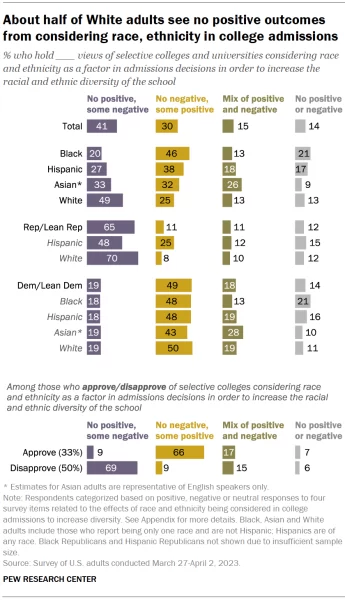
“We will do everything we can to implement recruiting strategies and practices to ensure we have the most diverse classes possible.”
President Biden has promised to help. In a televised address, Biden outlined a rationale in synch with news managers who say they want to report accurately on all segments of their communities:
“The statistics — one statistic: Students from the top 1 percent of family incomes in America are 77 times more likely to get into an elite college than one from the bottom 20 percent of family incomes. . . .” Biden said.
“Today, for too many schools, the only people who benefit from the system are the wealthy and the well-connected. The odds have been stacked against working people for much too long.”
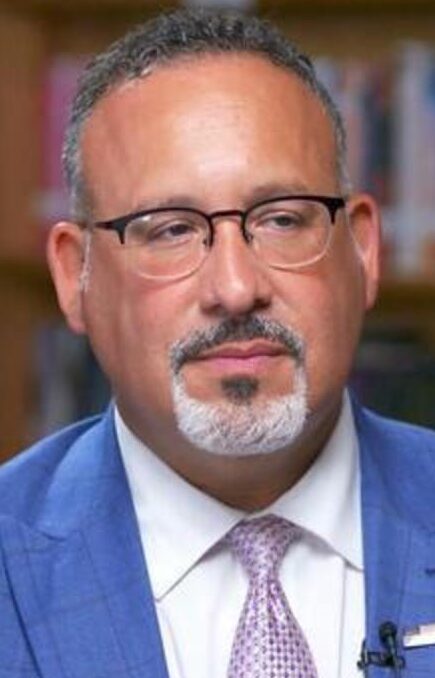 In a video call with reporters, Secretary of Education Miguel Cardona (pictured) stressed these White House talking points:
In a video call with reporters, Secretary of Education Miguel Cardona (pictured) stressed these White House talking points:
“The Biden-Harris Administration is also taking action to support colleges and universities so they can continue building pathways to upward mobility and success for all students to thrive in the American workforce and our Nation’s military, including:
“Providing colleges and universities with clarity on what admissions practices and additional programs to support students remain lawful, within the next 45 days as colleges prepare for the next application cycle;
“Convening a National Summit on Educational Opportunity;
“Releasing a report on strategies for increasing diversity and educational opportunity, including meaningful consideration of adversity;
“Increasing transparency in college admissions and enrollment practices; and
“Supporting states in analyzing data to increase access to educational opportunity for underserved communities.
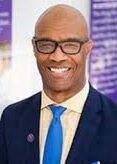 At Medill School of Journalism, Media and Integrated Marketing Communications at Northwestern University, Dean Charles Whitaker (pictured), a Black journalist, began a statement with his history of advocacy for diversity. Then he added, “We want to assure our stakeholders that while we will respect the law, we remain steadfast in our commitment to making our classrooms and, by extension, our industries, places that better reflect the demography of our country.”
At Medill School of Journalism, Media and Integrated Marketing Communications at Northwestern University, Dean Charles Whitaker (pictured), a Black journalist, began a statement with his history of advocacy for diversity. Then he added, “We want to assure our stakeholders that while we will respect the law, we remain steadfast in our commitment to making our classrooms and, by extension, our industries, places that better reflect the demography of our country.”
At the University of Missouri, also home of a top-ranked school of journalism, an official statement noted existing constraints. “The Missouri Attorney General has instructed universities to ‘immediately cease their practice of using race-based standards to make decisions about things like admission, scholarships, programs and employment,‘ ” it said.
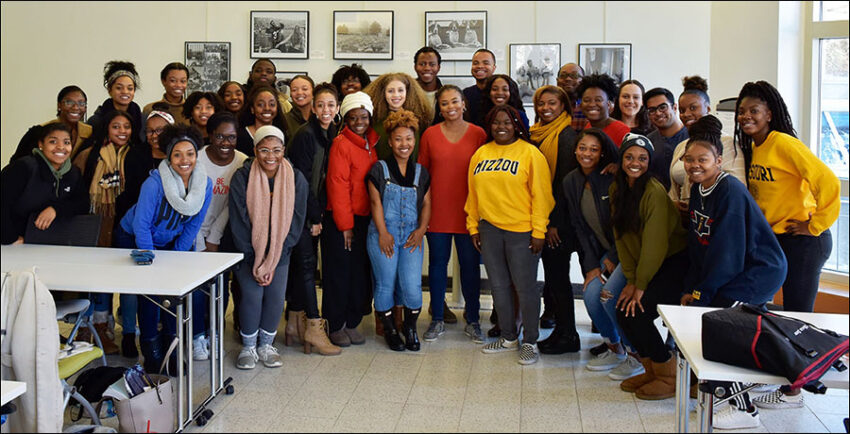
“Contributions from individuals with diverse backgrounds, experiences and perspectives promote intellectual pluralism and enable us to achieve the excellence that we seek in learning, research and engagement. This makes our university a better place to work, learn and innovate.
“As allowed by prior law, a small number of our programs and scholarships have used race/ethnicity as a factor for admissions and scholarships. Those practices will be discontinued, and we will abide by the new Supreme Court ruling concerning legal standards that applies to race-based admissions and race-based scholarships.”
Top officials at Syracuse University, which houses the S.I. Newhouse School of Public Communications, signed a statement saying, “Today’s decision is disappointing; however, in no way does it change Syracuse University’s longstanding and demonstrated commitment to being a university that is inclusive and welcoming to all.“
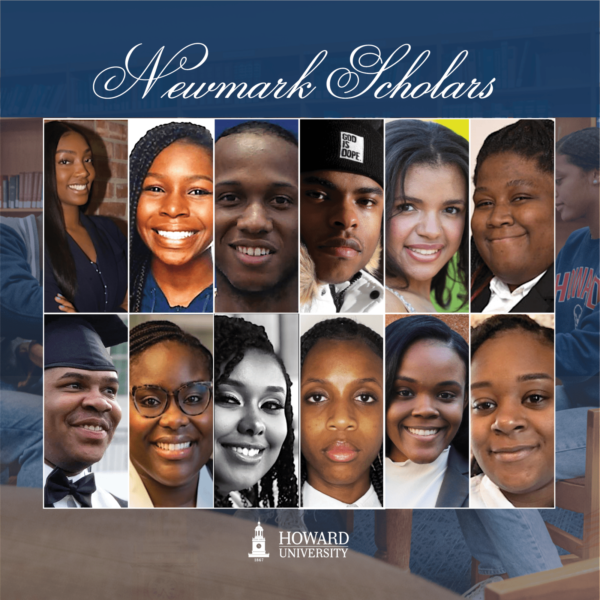
As might be expected, historically Black Howard University, home to the Cathy Hughes School of Communications, used more forceful language.
“The decision will not only have a devastating impact on the diversity of colleges and universities across the country, but will also decrease access to higher education for students of color everywhere. Education is still a top driver of economic success for all Americans, and this decision will have far-reaching ramifications for those seeking equity in the college admissions process and beyond.
“At our core, Howard University is committed to developing scholars and professionals who drive change. At a time when we need it most, it is disheartening to know that this ruling will hinder certain students from gaining admission to institutions of higher learning and receiving a quality education that can prepare them to be change agents and contributing members of our society.
“We will continue to partner with those institutions and organizations that understand the critical role affirmative action has played in ensuring equitable access to education for students of color and will closely monitor how today’s decision will impact higher education trends in the short and long term. We will also encourage others to join us in advocating for policies and legislation that safeguard a stronger future by increasing, not decreasing, educational opportunities for all.”
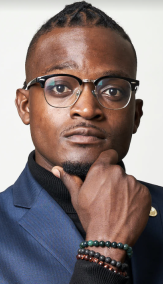 Still, that language was tame compared with some outside the academy. Wisdom Cole (pictured), NAACP national director of youth and college, planned to lead a group of students and activists in a mobilization starting at the Supreme Court steps.
Still, that language was tame compared with some outside the academy. Wisdom Cole (pictured), NAACP national director of youth and college, planned to lead a group of students and activists in a mobilization starting at the Supreme Court steps.
Cole said, “This is a dark day in America. Affirmative action has been a beacon of hope for generations of Black students. It stood as a powerful force against the insidious poison of racism and sexism, aiming to level the playing field and provide a fair shot at a high-quality education for all. Students across the country are wide awake to the clear and present danger encroaching on their classrooms. We will continue to fight, organize, mobilize and vote against all attempts to hold us back. We will hold the line against this clear pattern of hate. We will thrive!”
Biden sought to puncture misconceptions about affirmative action, and so did the Los Angeles Times.
“Many people wrongly believe that affirmative action allows unqualified students — unqualified students — to be admitted ahead of qualified students,” the president said. “This is not — this is not how college admissions work.
“Rather, colleges set out standards for admission, and every student — every student has to meet those standards. . . .”
Teresa Watanabe and Howard Blume wrote a Los Angeles Times story headlined, “A lot of what you’ve heard about affirmative action is wrong.”
For the Journalists’ Resource, Denise-Marie Ordway updated a piece with the subheadline, “How can colleges maintain or improve student diversity now that the Supreme Court has ruled it unlawful to admit students based partly on race and ethnicity? We look at research on the effectiveness of race-neutral alternatives.”
Ordway wrote, “Several alternate strategies have shown promise, although researchers estimate their impacts are relatively small. Academic studies have found none are as effective as race-based affirmative action, Zachary Bleemer, an assistant professor of economics at Yale University who studies college admission policies, told The Journalist’s Resource.
“ ‘States that have seen affirmative action bans do not offer a silver bullet for universities seeking to maintain racial diversity without race-based affirmative action,’ Bleemer wrote in an email.”
Ordway continued, “The University of Michigan, a top-ranked public university, introduced a wide range of programs to replace affirmative action. Attorneys for the school argue race-neutral strategies have been expensive, time consuming and labor intensive.”
After the law took effect in December 2006, the University of Michigan “was forced to radically alter its admissions process in order to even approach the diversity levels achieved prior to Proposal 2,” the state constitutional amendment that prohibits all public institutions and agencies from discriminating against or giving preferential treatment to anyone based on race, gender, ethnicity and other factors.
The attorneys wrote that in a 36-page amicus brief filed with the Supreme Court late last year in support of Harvard and UNC-Chapel Hill.
“ ‘That change was so disruptive that the response not only took time — over 15 years and counting — but vast resources and efforts extending far beyond University campuses, as U-M developed extensive new race-neutral initiatives that reached into school districts around the state,’ the attorneys write.”
Ordway also said, “The University of California system has adopted various race-neutral policies since voters there approved Proposition 209, a state constitutional amendment similar to Michigan’s, in 1996. That ban began with the freshman class of fall 1998.
“The state’s most selective public universities — the University of California, Berkeley and University of California, Los Angeles — lost the most ground. Prior to the ban, 6.32% of freshmen at UC Berkeley were Black. In 2019, that figure dropped to 2.76%. The proportion of Native American freshman fell from 1.82% to 0.37%.
“Hispanic enrollment, however, has grown across California’s public universities. But the state also has seen its Hispanic population swell in recent decades. This academic year, 56% of all children attending public elementary, middle and high schools there are Hispanic. . . .”
- Char Adams, Kimmy Yam, Sandra Lilley, Emi Tuyetnhi Tran and Cora Cervantes,, NBC: First college class after affirmative action ruling struggling with feeling their identity doesn’t matter
- Collin Binkley and Emily Swanson, Associated Press: Most in US say race should be considered, play small role in college admissions: AP-NORC poll (May 30)
- Donna Brazile, the Grio: Supreme Court affirmative action decision hurts Black students. Here’s how colleges should respond.
- Anna Chen, DC News Now: Universities, colleges respond to Supreme Court affirmative action decision
- Dorothy Butler Gilliam and Richard Prince, National Association of Black Journalists; and Zita Arocha, National Association of Hispanic Journalists, C-SPAN: Discussing affirmative action media coverage and discouraging use of the term “racial preferences.” (video) (Aug. 2, 1995)
- Emil Guillermo, Asian American Legal Defense and Education Fund: Whatever happens, the SCOTUS opinion on the Harvard affirmative action case won’t be the last word (June 9)
- Janet Gilmore, UC Berkeley: Affirmative action: What can other schools learn from UC Berkeley’s experience?
- Jeannie Suk Gersen, New Yorker: After Affirmative Action Ends
- Elie Mystal, The Nation: The Supreme Court Has Killed Affirmative Action. Mediocre Whites Can Rest Easier.
- Pew Research Center: More Americans Disapprove Than Approve of Colleges Considering Race, Ethnicity in Admissions Decisions
- Amber Phillips with Caroline Anders, Washington Post: The Five-Minute Fix
- Vincent D. Rougeau, Boston Globe: Clarence Thomas was a beneficiary of race-based admissions at my school (May 29)
- Michelle Singletary, Washington Post: Yes, I was hired because I was Black. But that’s not the only reason. (Sept. 18, 2020)
- Luke Taylor, News-Gazette, Champaign, Ill.: UI, other officials pan Supreme Court’s ruling on race-based admissions policies (quotes Leon Dash)
- Touré, the Grio: Right-wing media turns Asian student into another pawn in efforts to end affirmative action (June 13)
- Katy Tur, MSNBC: Department of Education Secretary @SecCardona breaks down what his department will do in the wake of SCOTUS’s affirmative action decision. (Twitter)
- Meena Venkataramanan, Washington Post: The fight for Asian American studies in colleges gains ground
- Ira Wilder, Ethan E. Horton and Eliza Benbow, Daily Tar Heel, University of North Carolina – Chapel Hill: Affirmative action unconstitutional, SCOTUS rules
Ed O’Keefe of CBS News reports Thursday on Michelle Obama’s statement on affirmative action. “Of course, students on my campus and countless others across the country were — and continue to be — granted special consideration for admissions,” she said. “Some have parents who graduated from the same school. Others have families who can afford coaches to help them run faster or hit a ball harder. Others go to high schools with lavish resources for tutors and extensive standardized test prep that help them score higher on college entrance exams. We don’t usually question if those students belong. . . .” (Credit: YouTube)
‘Affirmative Action’ or ‘Preferences’?
In 1995, the National Assocation of Black Journalists urged the media not to conflate the terms “affirmative action” and “racial preferences,” the term preferred by opponents of affirmative action.
“Sometimes ‘racial preferences’ is accompanied by the term ‘preferential treatment,” NABJ said.
From a report by the NABJ’s Media Monitoring Committee, later adopted by the NABJ board of directors and the subject of a news conference (video):
“These terms are pejorative and not synonymous with ‘affirmative action,’ defined by the U.S. Commission on Civil Rights as ‘a contemporary term the encompasses any measure, beyond simple termination of a discriminatory practices, that permits the consideration of race, national origin, sex or disability, along with other criteria, and which is adopted to provide opportunities to a class of qualified individuals who have either historically or actually been denied those opportunities and/or to prevent the recurrence of discrimination in the future.’
“Since polls have shown that the public supports affirmative action, but opposes ‘preferential treatment,’ the comingling of these terms, under the guide of objective reporting, unfairly characterizes affirmative action, the committee said.
“It also betrays a fundamental misunderstanding of the reason behind affirmative action: that it is intended to counter the built-in, systemic ‘preferences’ for white males that still exist, the committee said. In effect, race-based remedies are intended to counter preferences.”
Former first lady Michelle Obama made a similar point Thursday in a joint statement with former president Barack Obama. “So often, we just accept that money, power, and privilege are perfectly justifiable forms of affirmative action, while kids growing up like I did are expected to compete when the ground is anything but level,” she said.
The NABJ Media Monitoring Committee then was co-chaired by Richard Prince and Greg Moore.
- Too Fab: Barack & Michelle Obama Speak Out After Supreme Court Ends Affirmative Action In College Admissions
Murray Named Washington Post Sports Editor
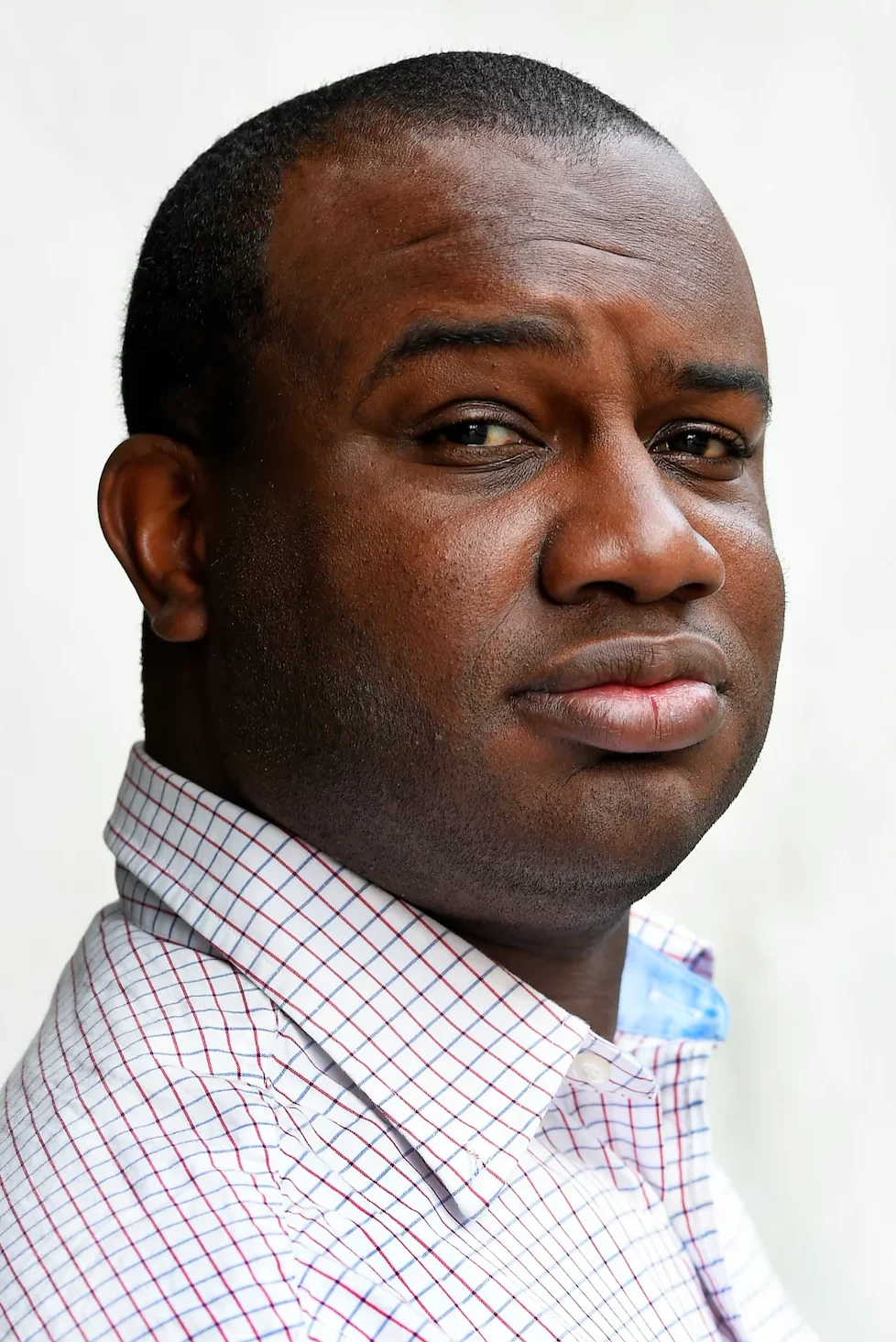 Jason Murray (pictured) who for three years was an assignment editor in the Washington Post Sports Department, was named the Post’s next Sports editor, its first Black journalist in the top role.
Jason Murray (pictured) who for three years was an assignment editor in the Washington Post Sports Department, was named the Post’s next Sports editor, its first Black journalist in the top role.
Murray joins a handful of African Americans leading newspaper sports departments, and is the one leading the largest staff. Randy Archibold, who had been sports editor at The New York Times, transferred to the news department in March to become senior editor for news.
Executive Editor Sally Buzbee wrote in a memo, “Jason has earned the wide respect and affection of his reporters and peers. In his guidance of our coverage of the NBA and WNBA, men’s and women’s college sports, tennis and auto racing, Jason has shown himself to be a strong communicator and steady hand. Immediately after he arrived, he ran our coverage of the unforgettable pandemic NBA season, played in the Disney bubble.
“In his time here, he has worked with engineering and design teams to develop a new interactive bracket design for our NCAA tournament coverage, and this year he guided our robust coverage of the women’s Final Four, including editing a memorable profile of Caitlin Clark written by Ben Golliver.
“Jason came to The Post from Syracuse.com/The Post-Standard in Syracuse, N.Y., where he was director of content, running teams for social media, photo, video and website analytics. He previously had served eight years as sports manager, as well as serving on the news organization’s editorial board. . . .”
Murray succeeds Matthew Vita, sports editor since 2009 and a 25-year Post veteran.
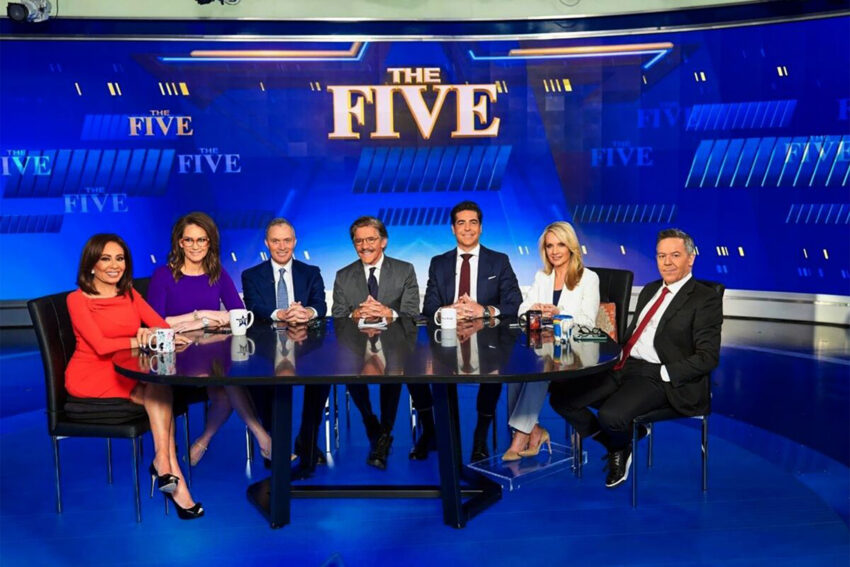
Rivera Quits Fox after ‘Firing’ From ‘The Five’
“Geraldo Rivera’s 22-year run at Fox News appears to be coming to an end,” Alex Weprin reported Thursday for the Hollywood Reporter.
“On Thursday afternoon, Rivera posted a video to his Twitter account filmed on a boat off the coast of Jones Beach in Long Island. In the video he told viewers, ‘I’ve been fired from The Five, and as a result of that I quit Fox.’
“He added that he would elaborate on that decision on Fox & Friends on Friday morning.
“Rivera said earlier this month that he was going to leave the 5 p.m. panel show, where he has been a regular panelist since last year. He had been expected to appear on Thursday’s episode.
“ ‘It’s been a great run and I appreciate having had the opportunity,’ Rivera wrote at the time. ‘Being odd man out isn’t always easy. For the time being, I’m still Correspondent at Large.’
“His video on Thursday suggests that his correspondent role is also coming to an end.
“A network spokesperson said in a statement to The Hollywood Reporter ‘We reached an amicable conclusion with Geraldo over the past few weeks and look forward to celebrating him tomorrow on Fox & Friends which will be his last appearance on the network.’ . . . ”
Rivera’s 80th birthday is July 4, is next week.
Wesley Lowery Joins American U. Faculty
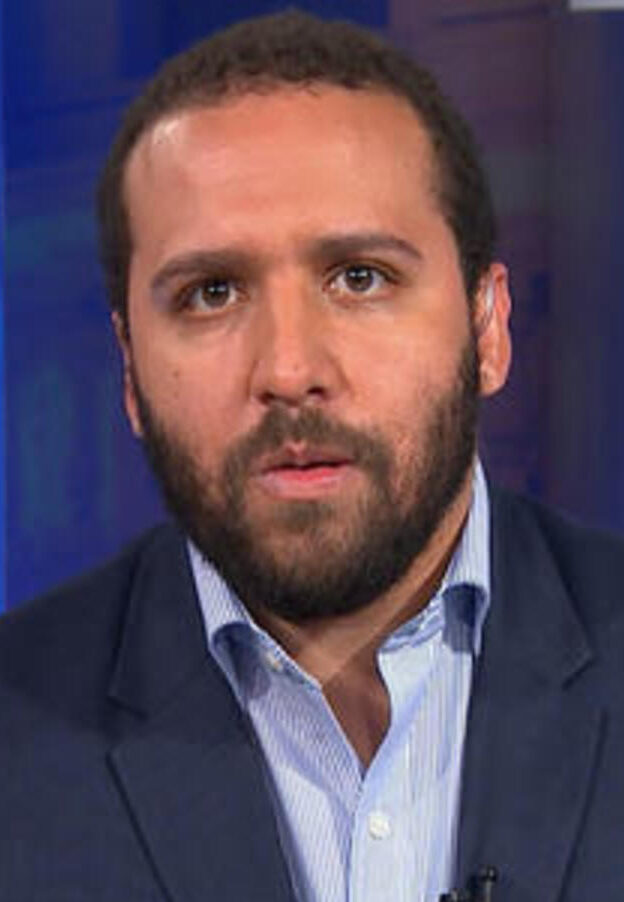 “Wesley Lowery (pictured), a Pulitzer Prize-winning reporter and best-selling author, widely regarded as one of the nation’s leading journalists covering issues of law enforcement, race and justice, has joined American University,” the university announced Monday.
“Wesley Lowery (pictured), a Pulitzer Prize-winning reporter and best-selling author, widely regarded as one of the nation’s leading journalists covering issues of law enforcement, race and justice, has joined American University,” the university announced Monday.
“Lowery, who starts July 1, will be an associate professor of investigative journalism, teaching courses in AU’s School of Communication, and executive editor at the Investigative Reporting Workshop, the nonprofit, editorially independent newsroom based in the school.
“ ‘Wesley Lowery is one of the most consequential journalism innovators and educators of our time. His work follows a long tradition of groundbreaking social justice journalism,’ said Leena Jayaswal, interim dean of AU SOC. ‘His investigations have reshaped practices in newsrooms across the nation and influenced national conversations on the Black Lives Matter movement, civil rights, and race relations. We’re delighted to welcome Professor Lowery to the School of Communication and the Investigative Reporting Workshop.’ ”
Lowery’s new book, “American Whitelash: A Changing Nation and the Cost of Progress,” was published Tuesday. It explores the rise of white supremacy in the wake of former president Barack Obama’s election and the subsequent election of Donald Trump.
To subscribe at no cost, please send an email to journal-isms+subscribe@groups.io and say who you are.
Facebook users: “Like” “Richard Prince’s Journal-isms” on Facebook.
Follow Richard Prince on Twitter @princeeditor
Richard Prince’s Journal-isms originates from Washington. It began in print before most of us knew what the internet was, and it would like to be referred to as a “column.” Any views expressed in the column are those of the person or organization quoted and not those of any other entity. Send tips, comments and concerns to Richard Prince at journal-isms+owner@
View previous columns (after Feb. 13, 2016).
View previous columns (before Feb. 13, 2016)
- Diversity’s Greatest Hits, 2018 (Jan. 4, 2019)
- Book Notes: Is Taking a Knee Really All That? (Dec. 20, 2018)
- Book Notes: Challenging ’45’ and Proudly Telling the Story (Dec. 18, 2018)
- Book Notes: Get Down With the Legends! (Dec. 11, 2018)
- Journalist Richard Prince w/Joe Madison (Sirius XM, April 18, 2018) (podcast)
- Richard Prince (journalist) (Wikipedia entry)
- February 2018 Podcast: Richard “Dick” Prince on the need for newsroom diversity (Gabriel Greschler, Student Press Law Center, Feb. 26, 2018)
- Diversity’s Greatest Hits, 2017 — Where Will They Take Us in the Year Ahead?
- Book Notes: Best Sellers, Uncovered Treasures, Overlooked History (Dec. 19, 2017)
- An advocate for diversity in the media is still pressing for representation, (Courtland Milloy, Washington Post, Nov. 28, 2017)
- Morgan Global Journalism Review: Journal-isms Journeys On (Aug. 31, 2017)
- Diversity’s Greatest Hits, 2016
- Book Notes: 16 Writers Dish About ‘Chelle,’ the First Lady
- Book Notes: From Coretta to Barack, and in Search of the Godfather
- Journal-isms’ Richard Prince Wants Your Ideas (FishbowlDC, Feb. 26, 2016)
- “JOURNAL-ISMS” IS LATEST TO BEAR BRUNT OF INDUSTRY’S ECONOMIC WOES (Feb. 19, 2016)
- Richard Prince with Charlayne Hunter-Gault, “PBS NewsHour,” “What stagnant diversity means for America’s newsrooms” (Dec. 15, 2015)
- Book Notes: Journalists Follow Their Passions
- Book Notes: Journalists Who Rocked Their World
- Book Notes: Hands Up! Read This!
- Book Notes: New Cosby Bio Looks Like a Best-Seller
- Journo-diversity advocate turns attention to Ezra Klein project (Erik Wemple, Washington Post, March 5, 2014)

